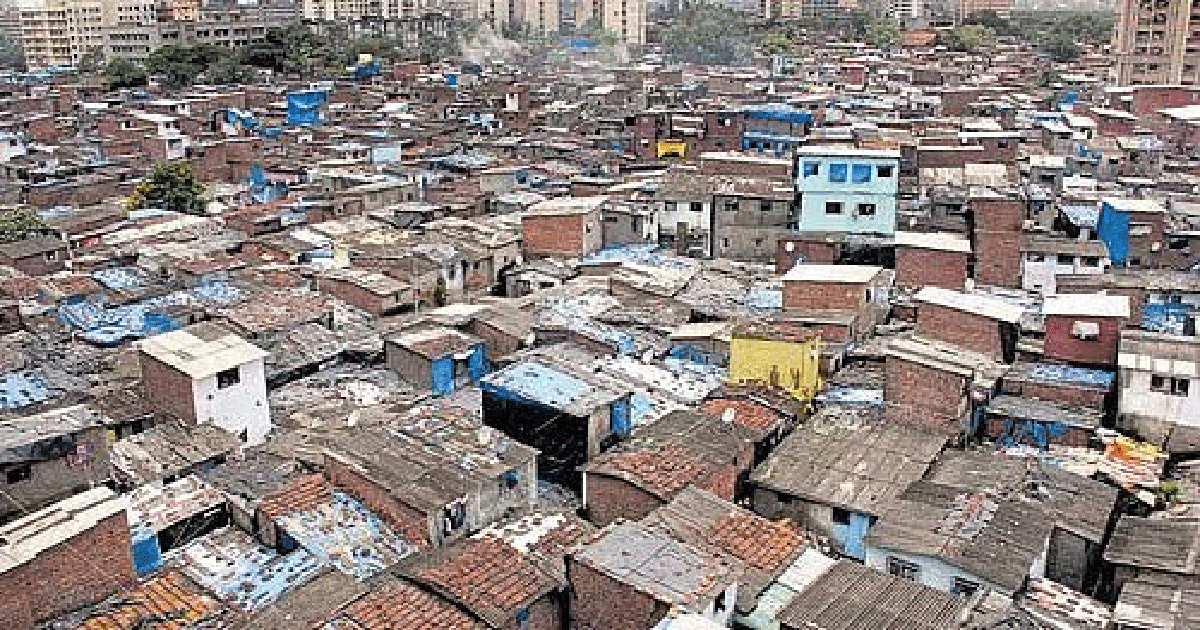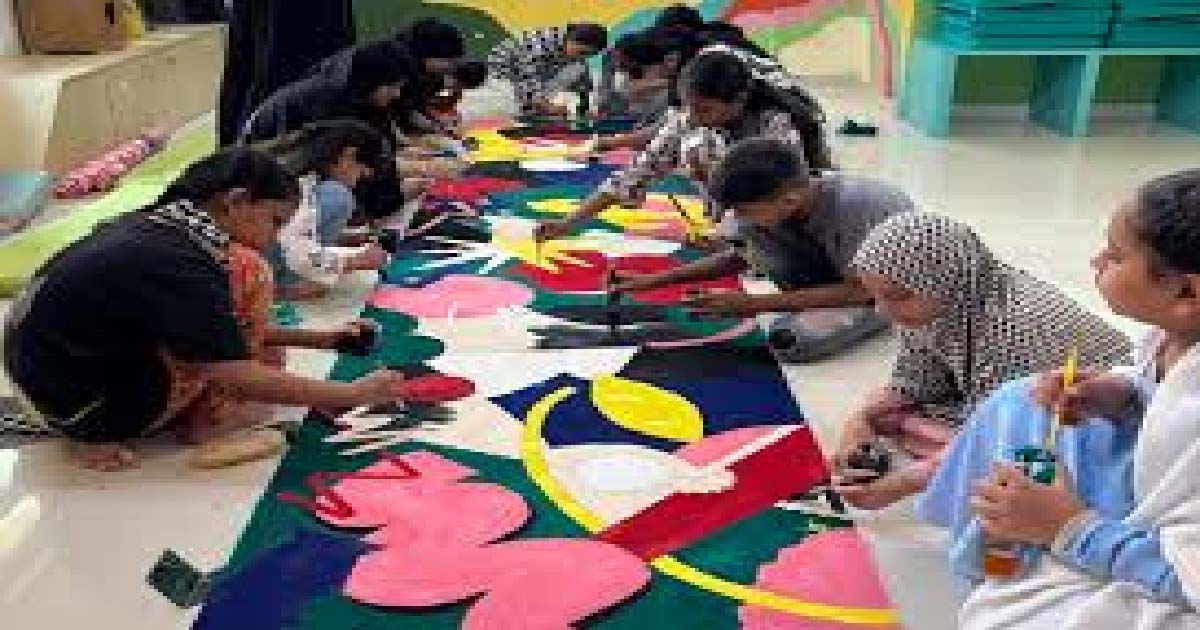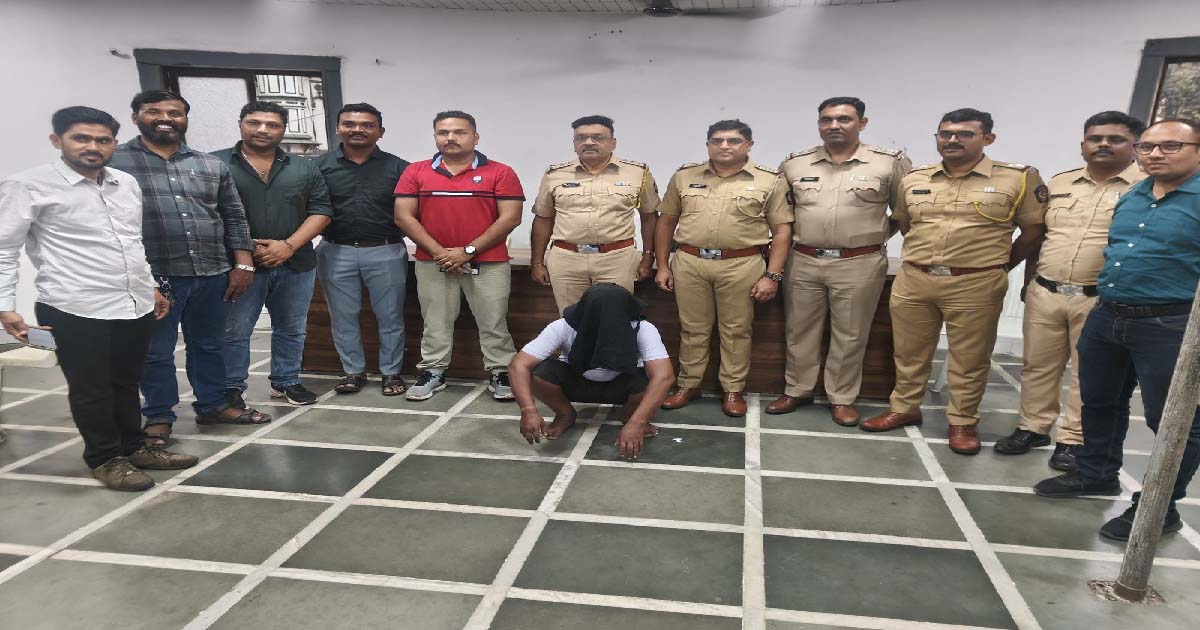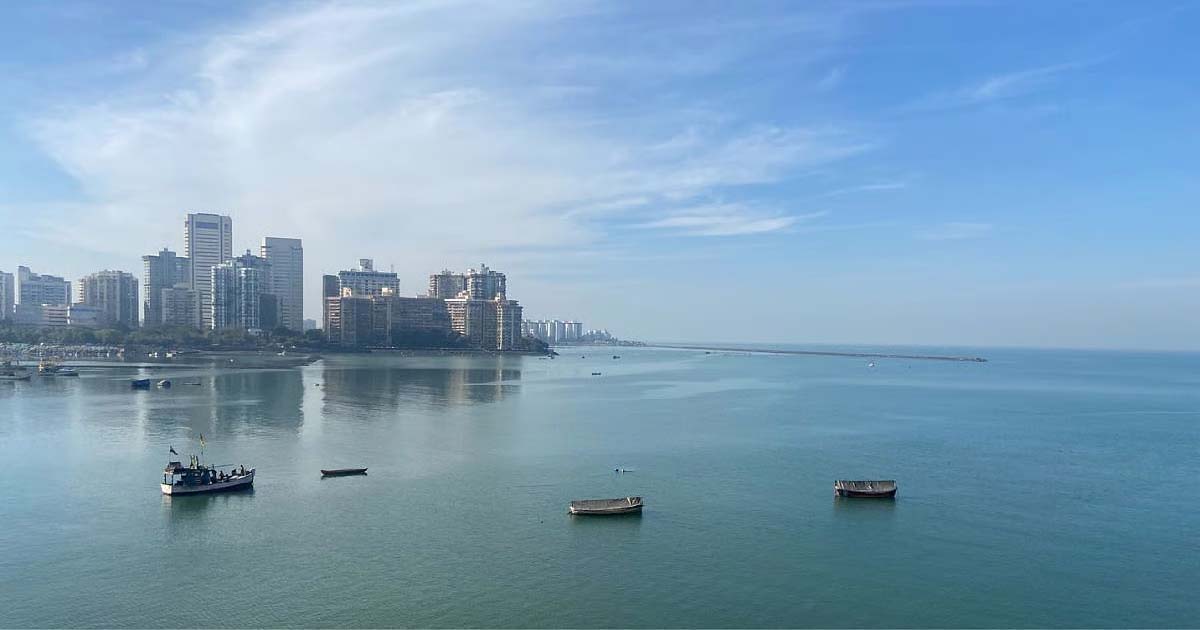Maharashtra
World’s Biggest Slum Redevelopment Project Takes Off

SVR SRINIVAS, the CEO of Dharavi Redevelopment Project, speaks to S BALAKRISHNAN about the super-gigantic mission. Explaining how everyone’s home and livelihood will remain intact, he says Dharavi is ‘Mini India’ and every faith and language will be respected without bulldozing the residents
The Dharavi Redevelopment Project (DRP) is the biggest urban renewal programme ever undertaken in the country. For the past several decades, there have been talks of redeveloping Asia’s largest slum, but this is the first time a concrete project, which is being jointly executed by the Maharashtra government and the Adani Group, has taken off the drawing stage, holding hope for lakhs of residents.
The sheer numbers are mind boggling. About 50% of the one million population might be eligible to be accommodated in Dharavi itself, while the remaining ineligible people will have to be relocated at different places in the metropolis. The total estimated cost is Rs96,000 crore and the project is to be executed over a period of seven years. The man at the centre of it all is SVR SRINIVAS, 59, a seasoned IAS officer of the 1991 batch, who is the CEO of DRP. He spoke exclusively to S BALAKRISHNAN on Wednesday.
When you took charge of the Dharavi project, what were the three main challenges you had in mind?
The first challenge was on-boarding the people, the residents of Dharavi. A project of this scale cannot happen without their involvement. Our approach is totally inclusive. So, the first step was to bring all the stakeholders together.
The second challenge was preparing a proper framework to attract market response. You see, this project had seen multiple failed bidding rounds in the past. It had earned the dubious distinction of being the world’s longestrunning bid process; going on for nearly 20 years!
The third challenge was to ensure livelihoods in Dharavi are protected. That required proper financial structuring, which was missing earlier.
So, to sum up:
■ Stakeholder integration
■ Financial structuring
■ Ensuring project viability and financial closure
This has been the longest-drawn project since the days of Rajiv Gandhi in 1985. What makes you confident it will succeed this time?
Let me answer in two ways. First, we’ve already seen half-success. Well begun is half done, they say. Work has started. Financial mobilisation has begun. India’s largest survey was conducted; we’ve finished about 85-90% of it. Survey work started today in Kumbharwada. So yes, it’s definitely moving forward, unlike earlier attempts.
Second, the stakeholders are onboarded now. There is still some resistance, but it is far less than before. Earlier, during the bidding stage, protests used to break out. Now, it’s more of a dialogue. The locals want to be heard, and our job is to listen and offer solutions. That’s what’s happening now.
The opposition has accused the government of “selling out” the project and displacing people. Please comment.
Not at all. In fact, I don’t even call this a ‘project’; it’s a movement. This is the most inclusive slum redevelopment scheme in Indian history. Our goal is simple: housing for all. For the first time, we’re giving homes to everyone – eligible or ineligible. Shops, factories, and commercial units are also being rehabilitated.
Normally, in Mumbai’s schemes, 50% are marked ineligible and left out. But here, even they are being accommodated. I won’t comment on politics, but yes, this is a brownfield project like no other. I’ve handled Mumbai Metro and other big projects, but nothing as complex as this. Also, this is the world’s largest urban renewal project.
What about livelihoods and the economy of Dharavi?
That’s central. Dharavi has a bubbling informal economy. We’re protecting it. Eligible residents will stay in Dharavi – homes, shops, businesses – all remain. Ineligible residents’ commercial units will also remain; they’ll only move residences outside, but their work continues in Dharavi. We had to go out-of-the-box for this – even suggested this to the chief minister, and he supported it.
So, ineligible people get to keep their business in Dharavi but move out for housing?
Yes. Due to legal constraints and court rulings, we cannot keep extending cutoff dates for eligibility. It would jeopardise the project’s viability. So, ineligible commercial operators can stay and run businesses in Dharavi, but their homes will be in rental housing nearby; with an option to buy. Eligible families get 350 sq ft homes in Dharavi. In some non-slum sectors, we’re even increasing units to 500 sq ft.
What about infrastructure – roads, sewage, water?
That’s part of our 3-tier focus:
■ Residential/Commercial/Industrial housing
■ Physical Infrastructure: Roads, sewage, water, electricity
■ Social Infrastructure: Schools, hospitals, community centres, temples, mosques, churches etc.
Today, Dharavi has 2-3 ft wide lanes, limited sunlight, and poor sanitation. We’re changing all that. The Special Purpose Vehicle (SPV) is responsible for all construction, infrastructure, and handover to the Dharavi Redevelopment Authority.
Who bears the maintenance cost of these new buildings?
Great question. Usually, developers give Rs40,000 per tenement as a corpus. We felt that’s not enough. So, we introduced a new idea: 10% of every building’s area will be set aside as commercial units. Rent or sale income from this will go to the society for maintenance.
It’s a win-win situation. This is the first time such a model is being implemented. Ineligible people will be accommodated in rental housing units in Kurla, Malad and Mulund with buyout options. So no one is rendered homeless.
What about religious structures?
There will be no bulldozing. Whether it’s a temple, mosque, or church; we respect all faiths. A committee led by retired High Court judges is handling rehabilitation of religious structures and their staff. Dharavi is Mini India; every faith and every language exists here. We aim to consolidate and rebuild grand structures, with community consensus.
When will Phase I be complete?
The goal is seven years. Mumbai’s average slum project takes 15-20 years. But we can’t say ‘you’ll get your home in 25 years’. As John Maynard Keynes said, “In the long run, we’re all dead.” So, 7 years is a practical target. Maybe a year or two of delay, but I’m reasonably confident.
How important is communication in this process?
Extremely important. I recently met people from Kumbharwada and Andolan groups – many weren’t aware of the commercial continuity assurance. That shows we need more communication. This interview itself is part of that effort – to inform people.
Dharavi’s informal economy generates nearly $1 billion annually – leather, textiles, food, recycling, and electronics. But they’ve been trapped in a lowinvestment cycle due to uncertainty. This project offers permanence, which unlocks confidence, investments, and growth. Our master plan includes dedicated industrial hubs. So yes, it’s a social engineering and economic upliftment project. We’re working hard to make this vision a reality.
Strong resident response as survey nears completion
Toll-free helpline registers 300 calls in past 30 days for eligibility survey
As the survey phase of the Dharavi Redevelopment Project (DRP) comes to an end, a significant number of residents, who had earlier missed or had not participated, are calling the project’s toll-free helpline for inclusion.
Out of 700 calls received in the past month, nearly 41% enquiries were related to requests to complete the door-to-door/ household survey, a crucial step in the redevelopment process to decide eligibility. This response highlights the palpable anxiety among residents about missing out on the redevelopment scheme and foregoing its housing benefits.
As only a few tenements and communities remain who have volunteered to exclude themselves from the eligibility survey like the Kumbharwada, Compound 13, a handful tenements on private lands in various slum pockets, it is a sign that residents are sensing time is slipping away. Despite initial resistance, Kumbharwada residents have started volunteering to get their tenements numbered in the past two days.
“We are heartened by the volume and quality of engagement we are receiving from the residents. The fact that nearly half of the calls are about the survey process shows that people are informed, interested, and eager to participate in the transformation. We remain committed to a transparent, people-first redevelopment effort that keeps communication open at every stage. This is a ‘housing for all’ project,” a DRP official said.
The toll-free helpline continues to serve as a vital two-way communication channel, ensuring that residents are heard, their doubts addressed, and their concerns recorded.
The DRP is among the largest and the most inclusive urban renewal initiatives in the world, aiming to uplift over 10 lakh residents through well-planned housing, infrastructure, and community services without displacing the social and economic fabric of the area.
Other queries received on the helpline were requests for a list of documents to complete eligibility verification, timeline expectations, and when new homes will be allotted. There were also inquiries about location, size of new housing units, numbering of upper floors and the recent campaign urging residents to come forward for the survey.
Maharashtra
Govandi is changing: Successful Talent of Govandi Festival filled with children’s artistic talents

Govandi: With the aim of changing the negative image of Govandi, notorious for drug addiction and crime, and providing a bright future for the children here, the Abu Asim Azmi Foundation, led by local MLA Abu Asim Azmi, has taken a big step. The foundation recently successfully organized the “Talent of Govandi Festival”, which was going on for the past one month.
The festival organized various competitions related to education, sports, skills and talents. Thousands of children from Govandi, Mankhurd, and Shivaji Nagar enthusiastically participated in more than 17 competitions, including singing, dancing, drawing, speech, mehndi, recitation, naat, handicrafts, rangoli, carom, boxing, cricket, volleyball, badminton, karate and poetry. The children performed brilliantly by showcasing their talents and hard work. The new and hidden talents of Govandi were introduced not only locally but also internationally. On this occasion, those IAS officers who added to the glory of Govandi were also honored. MLA Abu Asim Azmi, motivational speakers Sir Awadh Ojha and Sana Khan, and social media influencer Faizo among other dignitaries were present at the event. All of them encouraged the children and gave them prizes. The main objective of the festival was to encourage children to stay away from drugs and choose a better life and make their future bright, through which the talents of the children of Govindi were introduced to the whole world.
Maharashtra
Accused wanted in Madhya Pradesh murder arrested after 7 years from Dhoni

Mumbai: Paidhoni Police Station has traced the accused who was absconding for 7 years in a murder case in Madhya Pradesh and handed him over to the Madhya Pradesh Police. 6 November
From Katni district of Madhya Pradesh, Police Sub-Inspector Rishabh Singh Baghel, Dilip Kaul of Barhi Police Station informed Paidhoni Police that a case has been registered under sections 302, 294, 323, 324, 506, 147, 148 of the Indian Penal Code at Barhi Police Station, Katni district, Madhya Pradesh. The accused in this case is wanted for the last 7 years and is still hiding in the limits of Paidhoni Police Station in Mumbai, help has been sought from the police to trace him. This was informed to Hon. After which the higher officers were informed about this and the above wanted accused was searched and he was detained from the footpath near Balgi Hotel, P.D. Melo Road, Masjid Bunder East, Mumbai. Later he was brought to the Paidhoni Police Station and interrogated regarding the crime. Since there was evidence of his involvement in the crime, the said accused was handed over to the police team at the above police station, district. Katni and they took him to the Barhi Police Station. Where further investigation is underway. The accused has been identified as Raja Ram Ramadhar Tiwari, 35 years old. With the cooperation of the Mumbai Police, the Madhya Pradesh Police solved the case and the wanted accused has been arrested on charges of murder.
Maharashtra
Mumbai Weather Update: City Wakes Up To Clear Skies, Mild Breeze; Overall AQI Stays In Moderate Range At 78

wether
Mumbai: After weeks of unsettled weather and intermittent showers, the city finally woke up to clear skies and crisp air on Thursday, marking what appears to be the end of the monsoon season. For the past two days, no rainfall was recorded across Mumbai, signalling that the retreating monsoon clouds have made way for the onset of post-monsoon conditions.
According to the India Meteorological Department (IMD), the city is expected to experience clear skies through the day, with only a minimal chance of isolated light showers or thunderstorms in select pockets. Daytime temperatures are likely to hover around 33°C, while the minimum will settle near 23°C, conditions described as pleasant and comfortable for early November.
The recent spell of short but intense showers had not only brought temporary relief from humidity but also helped wash out accumulated pollutants, leading to an overall improvement in air quality. Prior to this, the withdrawal of monsoon winds had caused a spike in pollution levels due to stagnant air and increased vehicular emissions, resulting in a hazy skyline and reduced visibility.
Fresh data released by AQI.in on Thursday morning reflected this improvement. Mumbai’s overall Air Quality Index (AQI) stood at 78, placing it in the moderate category. While the figure marks a slight dip from the good air quality recorded earlier in the week, it still represents a substantial improvement compared to the smog-filled conditions observed after monsoon withdrawal.
Residents across various parts of the city reported clearer skylines and visibly better air. Among the city’s monitoring stations, Wadala Truck Terminal recorded the highest AQI reading at 92, followed by Parel-Bhoiwada (90) and Mulund West (88). Santacruz East and Bhandup West both registered an AQI of 87, keeping them within the moderate range.
Cleaner air was observed in several western suburbs, where Kandivali East recorded an AQI of 45, falling in the good category. Malad West (59), Powai (62), Jogeshwari (65), and Borivali East (67) were all categorised as moderate, suggesting a consistent improvement across the city’s landscape.
As per AQI.in’s classification, an index between 0–50 is considered “Good,” 51–100 “Moderate,” 101–150 “Poor,” 151–200 “Unhealthy,” and anything above 200 is deemed “Severe” or “Hazardous.”
-

 Crime3 years ago
Crime3 years agoClass 10 student jumps to death in Jaipur
-

 Maharashtra1 year ago
Maharashtra1 year agoMumbai Local Train Update: Central Railway’s New Timetable Comes Into Effect; Check Full List Of Revised Timings & Stations
-

 Maharashtra1 year ago
Maharashtra1 year agoMumbai To Go Toll-Free Tonight! Maharashtra Govt Announces Complete Toll Waiver For Light Motor Vehicles At All 5 Entry Points Of City
-

 Maharashtra1 year ago
Maharashtra1 year agoFalse photo of Imtiaz Jaleel’s rally, exposing the fooling conspiracy
-

 National News1 year ago
National News1 year agoMinistry of Railways rolls out Special Drive 4.0 with focus on digitisation, cleanliness, inclusiveness and grievance redressal
-

 Maharashtra12 months ago
Maharashtra12 months agoMaharashtra Elections 2024: Mumbai Metro & BEST Services Extended Till Midnight On Voting Day
-

 National News1 year ago
National News1 year agoJ&K: 4 Jawans Killed, 28 Injured After Bus Carrying BSF Personnel For Poll Duty Falls Into Gorge In Budgam; Terrifying Visuals Surface
-

 Crime1 year ago
Crime1 year agoBaba Siddique Murder: Mumbai Police Unable To Get Lawrence Bishnoi Custody Due To Home Ministry Order, Says Report












